Puppies: Socialization Checklist
SET UP FOR SUCCESS
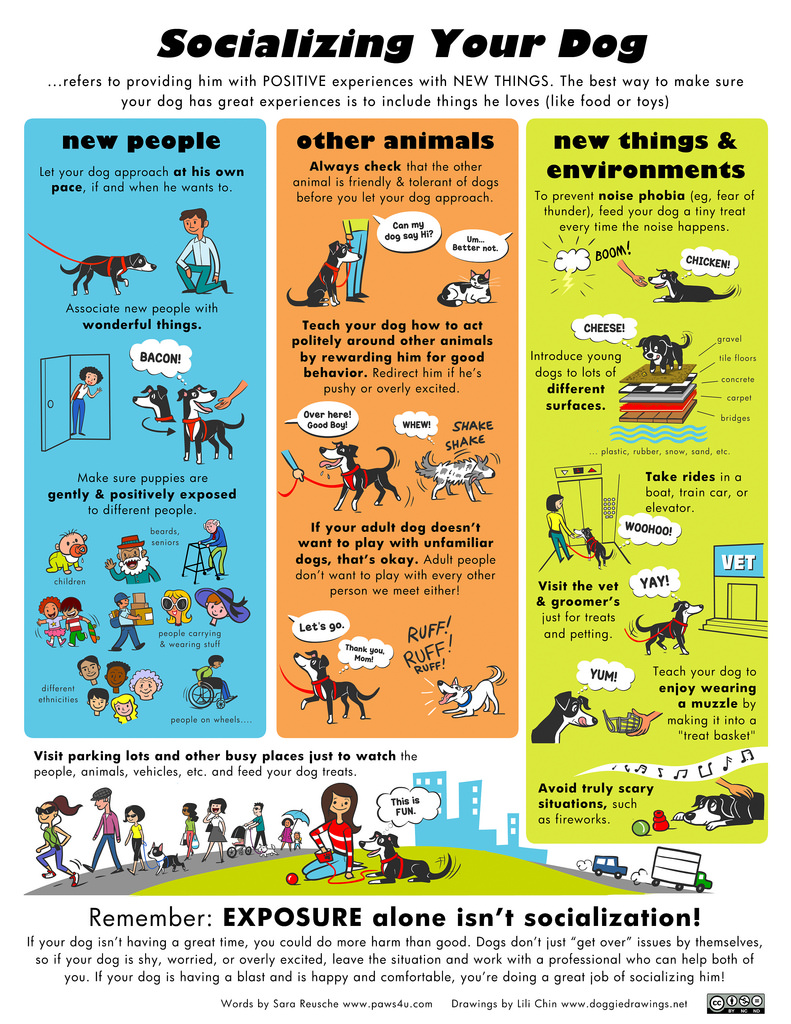 The first three months of your puppy’s life is the most important time for exposing them to as many new people, animals, stimuli and environments as possible, so they can learn positive associations and how to interact successfully with the world around them. Early socialization and positive reinforcement (R+) training classes can go a long way to creating a lifelong bond between you and your dog. The American Veterinary Society of Animal Behavior (AVSAB) position statement also supports and encourages early animal socialization. San Diego Humane Society offers a number of classes for puppies and adolescent dogs both in-person and online including Puppy Playgroups and our free Well-Socialized Pet Chats hosted over Zoom each weekend! These chats cover six topics related to socialization; how animals learn, desensitization to sounds, socializing with animals and people, conditioning body handling, exposure to novel objects and environments, and enrichment each of which are followed up by an email full of related resources. Sessions are appropriate for all pets of all ages; register for six consecutive sessions to hear all the topics. Check out our Well-Socialized Pet Resources playlist on YouTube!
The first three months of your puppy’s life is the most important time for exposing them to as many new people, animals, stimuli and environments as possible, so they can learn positive associations and how to interact successfully with the world around them. Early socialization and positive reinforcement (R+) training classes can go a long way to creating a lifelong bond between you and your dog. The American Veterinary Society of Animal Behavior (AVSAB) position statement also supports and encourages early animal socialization. San Diego Humane Society offers a number of classes for puppies and adolescent dogs both in-person and online including Puppy Playgroups and our free Well-Socialized Pet Chats hosted over Zoom each weekend! These chats cover six topics related to socialization; how animals learn, desensitization to sounds, socializing with animals and people, conditioning body handling, exposure to novel objects and environments, and enrichment each of which are followed up by an email full of related resources. Sessions are appropriate for all pets of all ages; register for six consecutive sessions to hear all the topics. Check out our Well-Socialized Pet Resources playlist on YouTube!
This is where your Puppy Socialization Checklist comes into play. It is divided into two parts of activities for you and your puppy to experience together. The first part contains a priority checklist of activities you should try to expose your puppy to before they are 12 weeks old. The second part offers more ideas for activities that will continue helping their development. Ideally, they should experience all of these items before they are 18 weeks of age. If you're looking for an opportunity to put this theory into practice, check out our Camp Socialization classes for exposing puppies and dogs of all ages to new experiences and novelty.
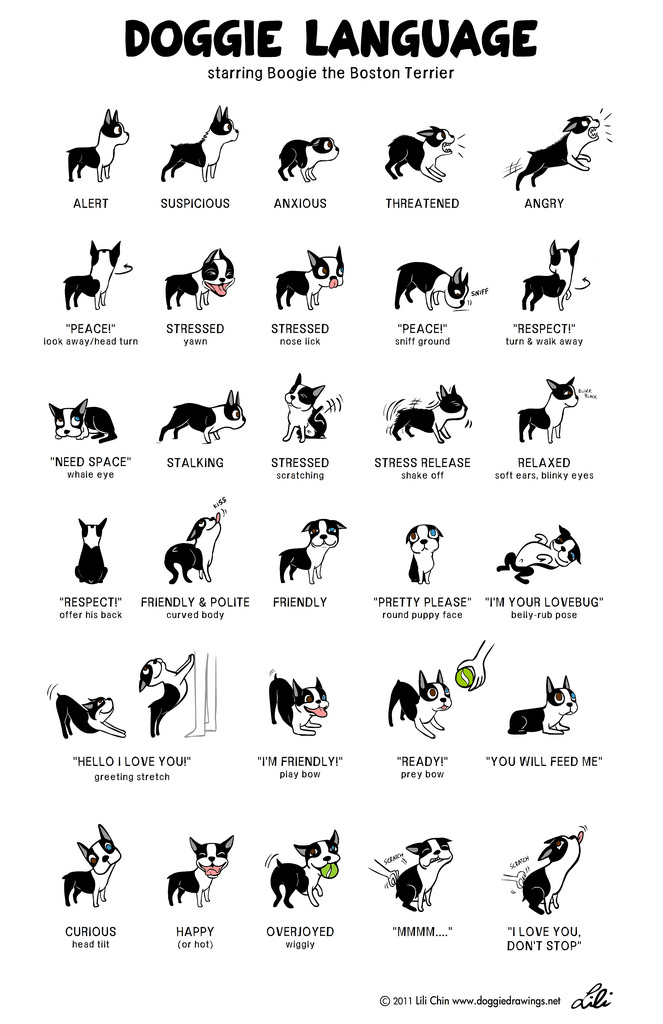 MAKE IT POSITIVE
MAKE IT POSITIVE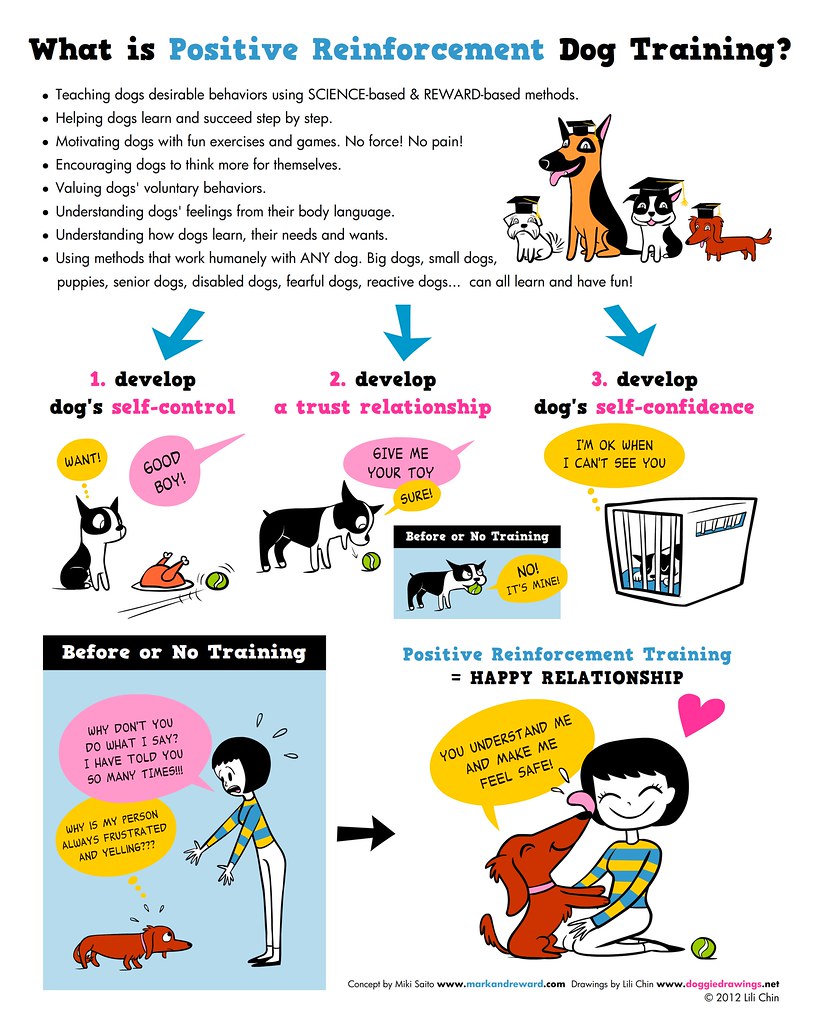
When introducing your puppy to all of these new experiences, reward with treats and praise so they create a positive association with the new activity (How do we know what our pet finds rewarding? Read this article: Rewards). We want your puppy to associate "new things" with "good things!" Take frequent breaks and go slowly, to avoid overwhelming your puppy or causing them unnecessary stress. Always give your puppy the choice to interact with something or not, as well as the choice to opt out at any time. If your pet feels forced into an interaction or experience, they may shut down and form a negative association with that experience (Check out: The Importance of Choice in Animal Training and How Dogs Learn). Furthermore, we want to reinforce your dog's calm, appropriate behaviors around new people, animals and things.
For an example of what rewarding calm behavior can look like, watch this video: Rewarding Calm Behavior. In this video, the trainer is rewarding the dog and cat for remaining calm in each other's presence.
.jpg?revision=1) BODY LANGUAGE
BODY LANGUAGE
Observe your puppy’s behavior and body language to see how they are feeling about an experience. Check out our YouTube playlist: Reading Body Language.
Dogs will display a range of behaviors that indicate whether they are comfortable and calm or not. Indications that your dog is experiencing relaxation or positive emotions include a soft, relaxed and neutral body, soft eyes with constricted (small) pupils, a loose hanging, neutral tail or a loose, large wagging tail (big wags), calmly approaching and choosing other behaviors while in  the presence of the new thing, such as playing, sniffing, able to look away from the thing, calmly moving away from the thing, sitting or lying down. Indications that your dog is experiencing stress, hyperarousal/overstimulation, fear or other negative emotions include a stiff and alert body, tense facial muscles and wrinkles in forehead, squinty eyes or wide "crazy" eyes with dilated (large) pupils, whites of the eyes showing (whale eye), nervous, appeasement "smile" (submissive grin), lips pulled back creating wrinkles around mouth (clown mouth or facial grimace), crouching with tail tucked between their legs, lifted lip showing teeth, puffed up tail and fur (piloerection), stiff fast wagging tail up high or low fast wagging tail (small wags), stiff slow tail wag high or low, ears back, and being unable to break focus from the new thing (fixation). Other stress signals and behaviors include low fear-based barking (as opposed to high excitement-based barking), panting, drooling, yawning, sneezing, lip licking, shake off, whining, growling, snapping, biting, fleeing, hard stare and fixation (intent focus) and apparent agitation.
the presence of the new thing, such as playing, sniffing, able to look away from the thing, calmly moving away from the thing, sitting or lying down. Indications that your dog is experiencing stress, hyperarousal/overstimulation, fear or other negative emotions include a stiff and alert body, tense facial muscles and wrinkles in forehead, squinty eyes or wide "crazy" eyes with dilated (large) pupils, whites of the eyes showing (whale eye), nervous, appeasement "smile" (submissive grin), lips pulled back creating wrinkles around mouth (clown mouth or facial grimace), crouching with tail tucked between their legs, lifted lip showing teeth, puffed up tail and fur (piloerection), stiff fast wagging tail up high or low fast wagging tail (small wags), stiff slow tail wag high or low, ears back, and being unable to break focus from the new thing (fixation). Other stress signals and behaviors include low fear-based barking (as opposed to high excitement-based barking), panting, drooling, yawning, sneezing, lip licking, shake off, whining, growling, snapping, biting, fleeing, hard stare and fixation (intent focus) and apparent agitation.
When socializing your puppy to something new, the goal is calm, relaxed body language and indications of positive emotions. Ask yourself: Are they enjoying this? Are they comfortable and calm? Are they eating treats? Do they seem relaxed and comfortable? Are they showing enthusiasm or are they being avoidant? If they are not enjoying it, take a break from the activity to avoid causing your puppy stress and negative associations with novelty (Check out these videos: Trigger Stacking & Stress Hormones and Counter Conditioning). Never force your pet to interact or share space with something or someone, because this can cause your puppy to become "sensitized" or more sensitive to (and weary of) a stimuli, person, animal or thing. For more information on desensitization, check out this article: What is Desensitization and Counter Conditioning in Dog Training?
Check out this B&T Lecture: Can You Speak Dog or Cat? to get an in-depth feel for the nuances of body language and then explore this video on reading body language while in the context of a training session.
USE TREATS & FOOD
We can increase socialization by pairing new things, experiences, sounds, smells and people with treats. This helps your puppy associate new things with good things! For example, as your puppy sniffs a harness or leash, give a treat. Remember to reward the action, and give the treat right away (within 3 seconds), so they understand investigating was a good behavior! This will get them more comfortable with exploring new objects and environments, because good things (treats, praise, etc.) happen when they do! Additionally, pair treats with physical touch, body handling and petting. Feed your puppy treats at the same time that you are touching them. If they stop eating the treats, stop touching them.
Have a variety of treats at hand. Try wet food on a popsicle stick or spoon. Try wet, stinky treats like boiled chicken, hot dogs or cheese. Try store-bought treats, soft or crunchy. Take note of which treats your dog prefers and have more than one type of treat on hand during training sessions — this helps them not get too bored or wander off because they never know what they’ll get next!
Assess your puppy's comfort levels. Try placing/sprinkling treats on the ground. Try putting them in a dish or puzzle toy. Try giving treats by hand. See what your dog gets most excited about and what they eat. Note: some animals are not comfortable taking treats from hands. If you see your puppy stiffening up, stretching slowly toward your hand and then quickly retreating, or avoiding the treat from your hand completely, try tossing the treats to them or placing them on the ground, instead.
Check out our Enrichment Resources YouTube Playlist for more fun ideas on how to utilize food and treats.
Trainer tips: Exposing your puppy to different textures of food can help avoid picky behavior later. Additionally, you can reserve part of their meals and use it for training, to ensure they still hungry enough to be interested in working for food and to avoid overfeeding your pet. Reward good behavior you observe throughout the day — investigating new things, chewing appropriately (on their toys), noticing another dog barking without reacting, allowing petting, greeting people appropriately (without jumping), etc.! When you reinforce the good, appropriate choices your puppy is making on their own, you will be helping them learn which behaviors are expected and desired in the home.
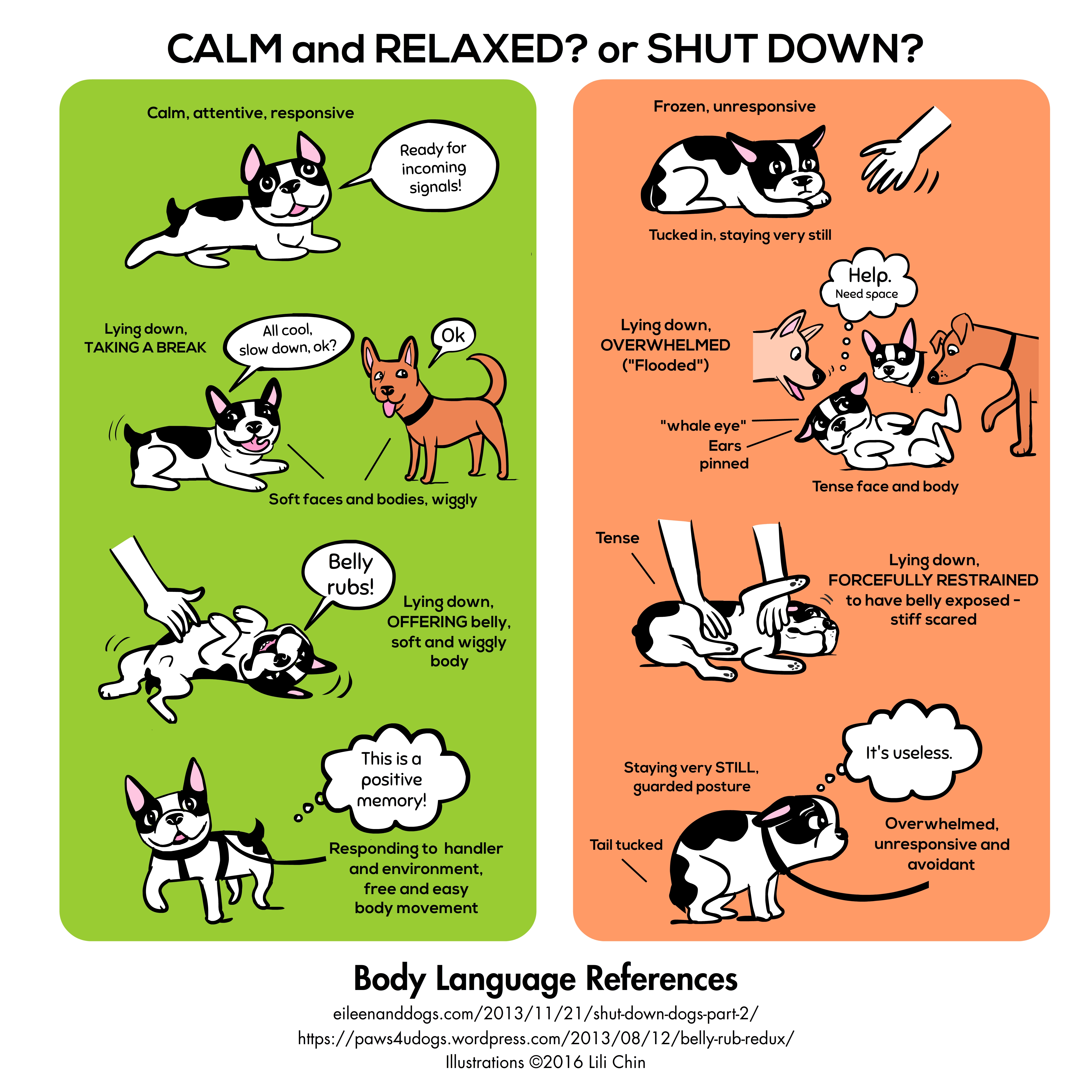 TAKE IT SLOW
TAKE IT SLOW.jpg?revision=1)
Handling and exposure to novelty should only continue (with treats and positive reinforcement!) if your puppy is comfortable, relaxed and enthusiastic. Doing too much too fast can lead to overstimulation, which can result in frustration, fear or anxiety. Start with small experiences like the feeling of grass, walking on tile or meeting one new person. Be sure your puppy is actually calm and relaxed, rather than shut down. When an animal is overwhelmed or fearful, they may freeze up, remain very still and quiet, and act unresponsive. These signs are often mistaken for calmness. However, these are actually signs that an animal is shut down. A shutdown animal may be unresponsive, avoidant and seemingly apathetic or aloof. This is because they are overwhelmed and giving up, NOT because they "don't care about" the trigger or are unfazed by it. 
Don’t force your puppy to interact with a new environment or a new object; instead back away a bit until the puppy relaxes. Always give them a choice in how they engage with - or don't - new experiences. If your puppy starts to struggle or avoid the handling or new thing, decrease the type of handling or increase your puppy's distance from the new thing/trigger. Work your way back up, slowly. Then use treats and praise in a silly or calming voice to help them feel more confident or enthusiastic in approaching the new and potentially scary thing, person or sound. As the puppy becomes more relaxed, gradually they will get closer to the stimuli, pairing praise and treats with the experience. When your puppy shows you their boundaries, respect and listen to them.
Trainer tip: When working on body handling or touch sensitivity, offer your puppy a spoonful of wet food/peanut butter/cream cheese or a handful of high value treats they can nibble at but not eat all at once. You could also smear some wet food or other lickable treats on a small dish or a licky mat (any easy-to-clean food-safe textured surface). Make sure the food is at an angle where you can still easily and comfortably do the handling! As soon as they begin eating, begin handling. The moment they pause, stiffen up, move away or show other subtle stress signals, stop handling. Your puppy is telling you they need a break. When they resume eating, resume handling. This pairs the sensation of the handling with the high-value reward of food! For additional information on handling sensitivity, check out: How Would YOU Like it? and Behavior Challenges: Does Your Pet Not Like To Be Touched?
WATCH OUT FOR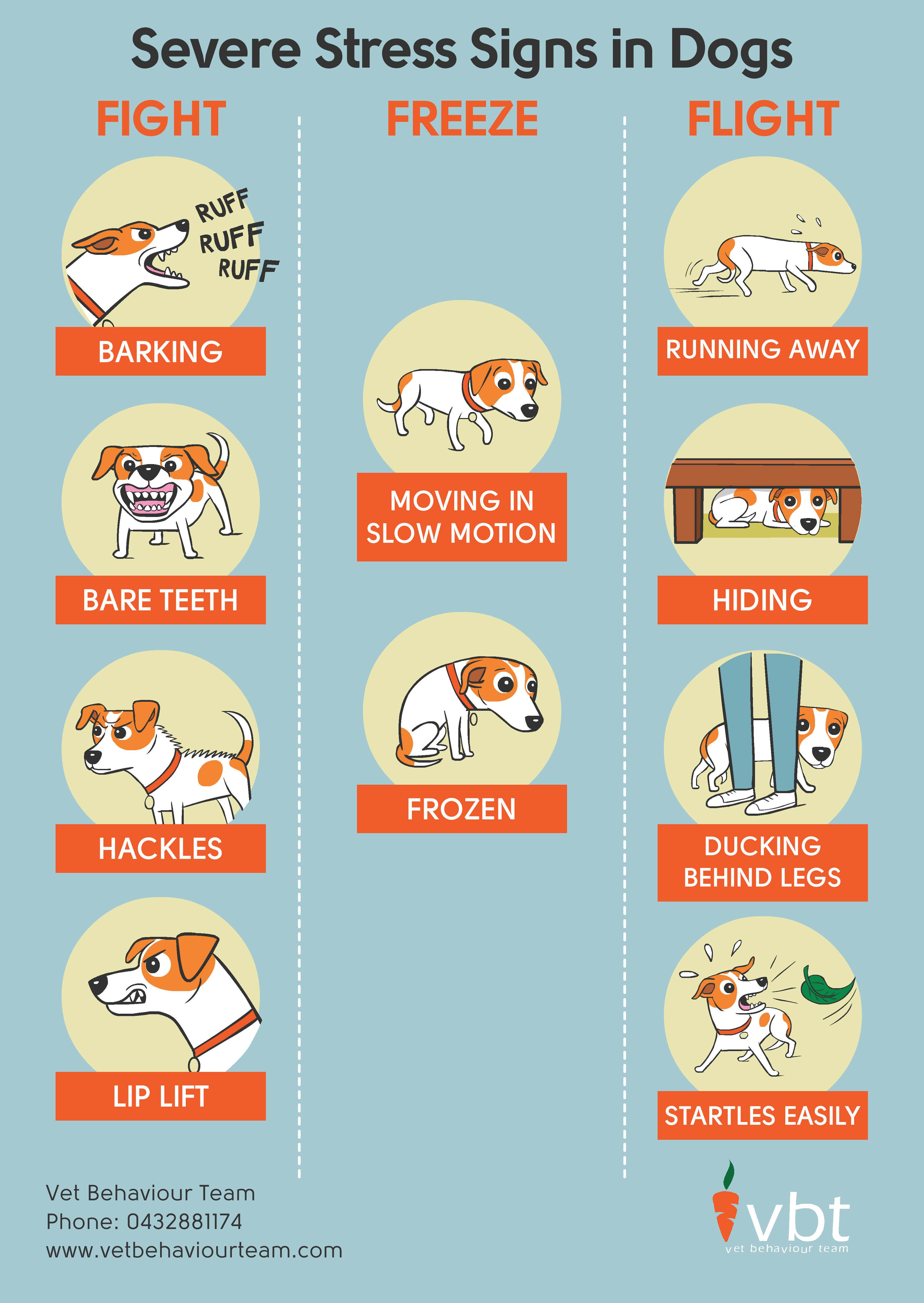.jpg?revision=1)
Please consult a professional trainer/behaviorist to assist you in your socialization process for fearful puppies who display extreme behavioral responses such as shaking uncontrollably, urinating/defecating, growling, snapping or biting. See the B&T Lecture: How to Pick a Trainer 101 to learn how to find an appropriate trainer.
MEETING NEW PEOPLE
Puppies should be allowed to choose if and when to approach strangers on their own and get treats for coming up to greet (Check out these videos: Social Pressure & Animal Interactions and Aggressive Behavior & The Importance of Choice). Encourage slower rather than sudden movements, “soft” as opposed to direct eye contact, and calm or lightly playful voices as the puppy is choosing (or choosing not) to approach or interact. Instruct people to wait for the puppy to come to them to solicit attention before they attempt to pet or touch them. Avoid towering over or reaching over your puppy and avoid petting the top of their head. Instead, have people pet your puppy under their chin, on their chest or side, where the puppy can see their hand. Call your puppy away or ask for alternative behaviors BEFORE they have a chance to get overly excited and start jumping or nipping. Keep interactions with new people brief, calm and positive. Another great way to build a positive rapport with strangers is playing with toys!
Trainer tip: Meeting people can be hard if your puppy is on high alert and guarded when they hear the doorbell or people come to the front door. To prevent reactivity in the home, use YouTube or recordings on your phone to gradually expose and desensitize your puppy to sounds like doorbells, knocking, groups of people interacting (in a manner similar to what they’d experience in your home). Start at a very low volume and treat your puppy every time they appear to perceive the sounds and remain calm. Only raise the volume if they’re staying relaxed — the moment they appear nervous or stressed decrease the volume, so they calm again; continue with rewards several times and then end the session. Soon the sounds of people arriving and sharing the space will be a very positively conditioned response! If your puppy is particularly shy or nervous around new people, check out: Adopting: Shy or Fearful Dogs, Puppies: Fear Periods & Reactivity and Behavior Challenges: Decreasing Fear of Loud Noises. If your puppy is showing signs of reactivity around people, other animals or sounds and stimuli, check out: Training Tips: Calm Behavior at Home, Behavior Challenges: Barking — What's The Fuss About? and our Sociability, Reactivity, Leash Skills & Play YouTube playlist.
For more info on early puppy socialization, visit the American Veterinary Society of Animal Behavior’s position statement on early socialization.
MEETING OTHER ANIMALS
Introducing a puppy to another animal is usually a bit easier than introducing an adult dog to another animal. But that doesn't mean it can't come with challenges. There are ways we can set our pets up for success to promote positive, safe introductions and interactions.
For in-depth step-by-steps on introducing your puppy to another pet, check out: Introducing Dogs at Home and Introducing Dogs to Cats. For more information on animal interactions and play, check out our Behavior and Training Lectures: Introducing New Pets and Dog Park Etiquette.
PEOPLE USING
- Canes
- Crutches
- Metal walkers
- Wheelchairs
- Baby strollers
- Backpacks
- Luggage
PEOPLE IN UNIFORM
- Police officers
- Postal workers
- Vet clinic staff
PEOPLE WITH
- Umbrellas
- Baseball caps
- Helmets
- Mustaches
- Beards
- Glasses
ATHLETIC FOLK
- Joggers
- Skateboarders
- Cyclists
- Rollerbladers
- Roller skaters
- Soccer players
INTERACTING WITH PEOPLE
Check out our Body Handling YouTube playlist.
- Holding puppy
- Touching paws
- Touching muzzle
- Touching ears
- Touching collar
- Checking teeth
- Clipping nails
- Brushing teeth
- Checking between pads
- Cleaning ears
- Touching rear legs
- Brushing/grooming
PEOPLE SOUNDS
- Talking loudly
- Laughing
- Crying
- Shouting
- Arguing
- Newborn crying
- Newborn laughing
- Infant crying
- Infant laughing
- Children playing
- Children laughing
- Children crying
- Children shouting
DIFFERENT SETTINGS
- Rides in vehicles (other than to vet)
- Socialization classes
- Vet clinics
- Groomers
- Elevators
- Automatic doors
- School grounds
- Car washes
- Walks after dark
- Busy intersections
- Crowds of people
- Your family’s homes
- Sleepover visits
- Department stores
HOME ENVIRONMENT
- Phone ringing
- Doorbell
- Knocking at the door
- Hair dryer
- Vacuum cleaner
- Dishwasher
- Electrical appliances (i.e. blender, can opener, mixer)
- Sweeping
- Mopping
- Guests
- Gatherings in home
- Repair people
- Delivery people
- Gardeners
- Dropping a hair brush
- Washing a load of laundry
OUTDOOR EVENTS
- Parade
- Live music band
- People dancing
CONSTRUCTION SITES/ GARDENING
- Jackhammers
- Cranes
- Front-end loaders
- Bulldozers
- Sledgehammers
- Power tools
- Forklifts
- Carrying shovels
- Wheelbarrows
- Lawn mowers
- Weed whackers
MOTORIZED VEHICLES
- Cars
- Motorcycles
- Screeching brakes
- Cars backfiring
- Street cleaners
- Garbage trucks
- City buses
- Electric wheelchairs
- Firetrucks
- Police cars
- Mail trucks
- UPS/delivery truck
ANIMALS
Check out our Behavior & Training Lecture on Introducing Pets
- Friendly, healthy dogs
- Puppies
- Cats
DIFFERENT SURFACES
- Going up stairs
- Going down stairs
- Ceramic tiles
- Carpet
- Slippery surfaces
- Manholes
- Grates
- Grass
- Gravel
- Children’s playground equipment
STRANGE SIGHTS
- Scooters
- Tricycles
- Hula hoops
- Remote-control toys
- Flags/banners
- Statues of people
- Statues of animals
SOUNDS
Check out our Well-socialized Pet Chat discussion on Desensitizing our Pets to Sounds.
- Sirens on police vehicles
- Sirens on ambulances
- Sirens on firetrucks
- Thunder sounds
- Fireworks
- Construction site noises
- People yelling
- Trucks backing up with alarm sound
CONTINUED DEVELOPMENT CHECKLIST
ANIMALS
- Small pets (hamster)
- Large birds (geese)
- Horses
- Goats
- Pigs
- Chickens
- Ducks
PEOPLE WITH
- Leg in a cast
- Leg scooter
- Baby carriers
- Wagons
- Shopping carts
- Holding balloons
- Rain coats
- Sunglasses
- Cowboy hats
- Visors
- Costumes
- Masks
- Beanies
- Punk haircuts
- Shaved heads
PEOPLE IN UNIFORM
- Firefighter
- Vet tech
- Veterinarian
- Ambulance attendant
- Crossing guard
- Meter reader
- Telephone worker
- Courier
ATHLETIC FOLK
- Cross-county skiiers
- Sledders
- Snowboarders
- Surfers
- Windsurfers
- Speedwalkers
- Spectators at 10K
- Paddlers (kayaks, canoes)
- Hang gliders
- Swimmers
- Water-skiers
- Martial artists
- Bike couriers
- Dodgeball players
MOTOR VEHICLES
- Water scooters
- Airplanes
- Helicopters
- Snowplows
- Trolleys
- Segways
- Hoverboards
DIFFERENT ENVIRONMENTS
- Boarding kennel
- Bank
- Gas station
- Toll booth
- Friend’s home
- Public transit
- Country vs. city
- Escalator
- Pet supply store
- Downtown
- Boat ride
- Petting zoo
- Tunnel
- Bridge
- Outside day care
- Active railway
- Crowd of people clapping
- Crowd of people cheering
- Drive-thru
- Sporting facility
- Beach
- Hiking trail
- Office
- Park
- Boardwalk
- Public event
- Mall
- Plaza
- Coffee shop
- Brewery
- Restaurant downtown
- Restaurant by the water
- Fast-food restaurant
- Tourist spot
- Movie in a park
- Pool
- Lake
- Inflatable pool
- Home environment
- Phone announces calls
- Loud TV
- Loud music
- Kettle
- Dog in bath/shower
- Home office
- House party
- Maintenance people
- Dropping a plastic container
- Dropping a pot/pan
- Popcorn popping
- Fire alarm
- Drying a load of laundry
ENVIRONMENTAL HAZARDS & NOISE
- Snowblowers
- Snow
- Rain
- Wind
- Airport
- Loud speakers
- Building demolition
- Sand
- Wood
- Tile
- Marble
- Watery or wet
- Cement
- Asphalt
- Swinging bridge
- Wooden dock
- Tarmac (not on a hot day)
- Artificial grass
- Mud
- Ice
OUTDOOR EVENTS
- Hot air balloon
- People singing
- Farmers market
- Beach party
- Bonfire
- Santa Claus
- Easter Bunny
- Mascot
- Rodeo
- Fair
- Sporting event
- Clown
- Mime
- Rush hour
- A rally/protest
- Street vendor
- Food truck
CONSTRUCTION SITES & GARDENERS
- Ride-on mower
- Leaf blower
- Electric hedge shears
- Garden hose
- Sprinkler system
STRANGE SIGHTS & SMELLS
- Drunk people
- Ice cream trucks
- Strong perfumes
- Strong cooking smells
- Hammocks
- Playground swings
- Playground tunnels
- Kites
- Model airplanes
- Low-flying airplanes
- Air-filled decorations
- Pinwheels
- Loud kids’ toys
- Children in high chairs
- Children in walkers
- Children in swings outside
- Children in swinging chair inside

